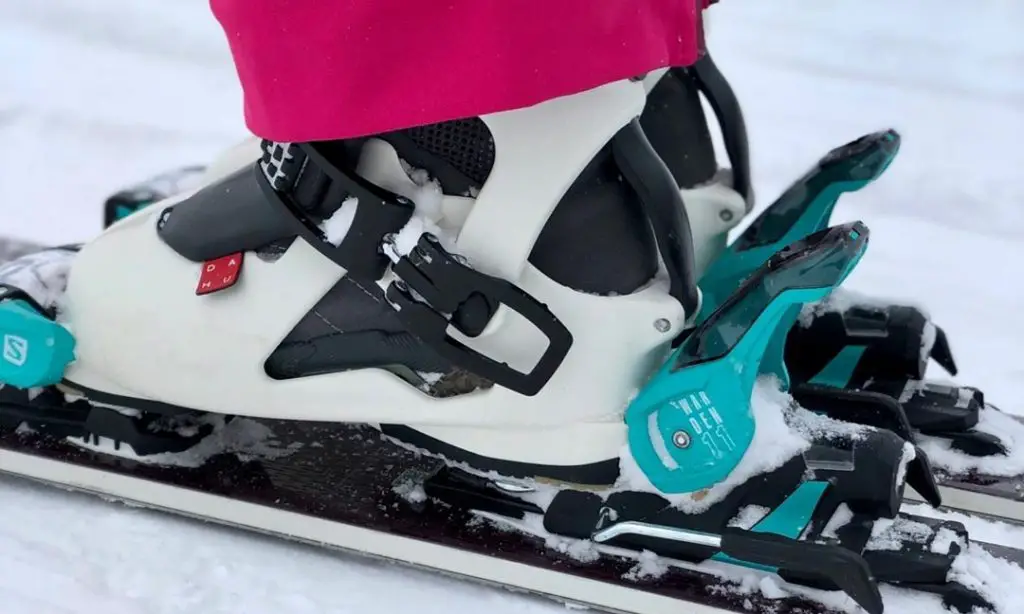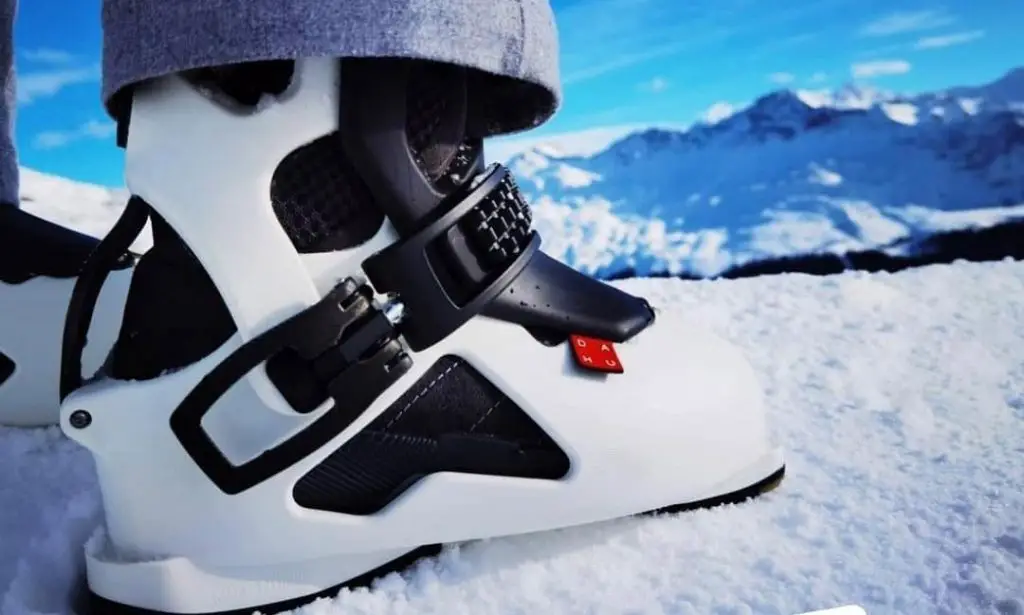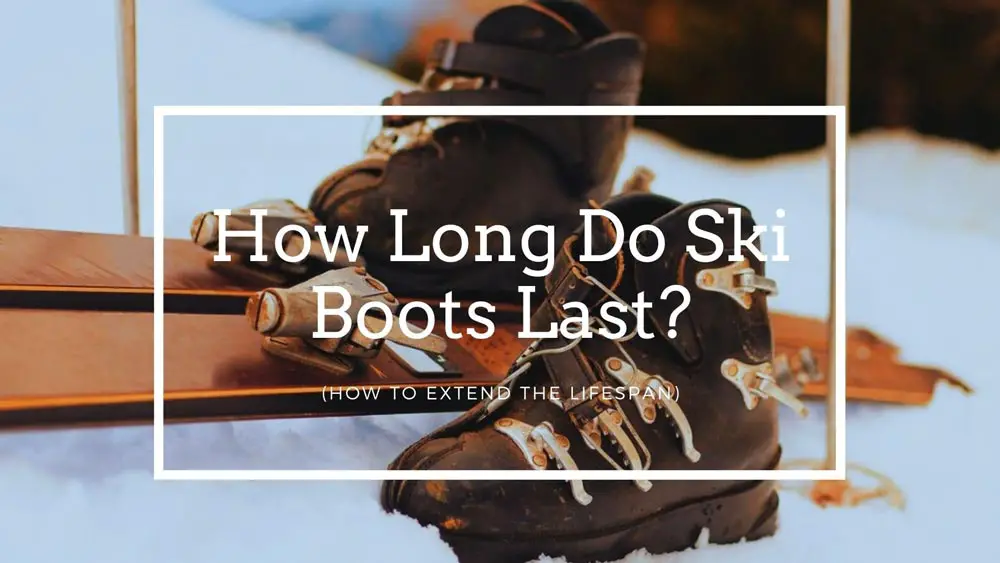As the first flakes of snow mark the onset of the holiday season, tourists usually head up to hill stations to ski their troubles away.
However, skiing is a dangerous activity, so it’s important to be well-equipped. We have seen that most people fail to identify when their old ski boots have worn out, which might prove to be disastrous.
Hence, today we’ll look to answer the question – how long do ski boots last? If you are ready, let’s get started.
How Long Do Ski Boots Last?
While there is no fixed time frame, cheaper ski boots last 50-100 days while professional boots last longer, between 150 and 200 days, in addition, all boot liners have a lifespan of 40-100 days.
When To Replace Your Ski Boots?

Irrespective of maintenance, there will come a time when you will have to replace your ski boots. Luckily, we know most of the tell-tale signs to help you.
Flexibility
As you become a more accomplished skier, the difference between first-time ski boots and high-performance products becomes apparent. For first-timers, the ski boots are more flexible for better balance and control.
On the other hand, professional ski boots are less flexible and more sturdy. That said, as you continue to wear them in, the flexibility increases but still remains much less compared to old boots.
Poor Fittings
Another giveaway that you might need to replace your old boots is if they no longer fit. With time the liners become compressed, thereby wrapping around the feet tightly, which leads to reduced comfort.
Moreover, if you continue to use the same pair of ski boots, it might cause chronic foot pain.
Damaged Shell
One of the most obvious signs that you need new ski boots is a damaged shell. Over time, the constant slipping, sliding, and falling damages the shell. And if you don’t change the boots, it increases the risk of a serious injury.
Worn-Out Parts
Finally, like normal shoes, ski boots also show wear and tear near the heels and toes. As a result, they might not be fit for skiing and could lead to a serious injury.
The most common problem occurs if the heels and toes become round, providing a loose fitting with the bindings. Other than that, any kind of damage could prevent you from clicking in, which might hamper your ability to maneuver while moving at high speed.
Why Ski Boots Wear Out?

There are innumerable factors why ski boots might wear out. However, we have shortlisted the most common reasons for your benefit:
Prolonged Use
As with most high-tech gear, you should refrain from using them outside their natural landscape. Ski boots prove perfect for sliding over thick blankets of snow; naturally, using them in sparsely snow-covered areas or for walking leads to more damage.
Storage Issues
Although ski boots are sturdy and can last many winters of rough use, they deteriorate rapidly if consumers store them in unsuitable spaces.
You must remember that even if you ski sporadically, the liner tends to get wet. And it’s extremely important to dry the boots sufficiently to prevent mold growth.
However, there are certain dos and don’ts when it comes to drying. For instance, directly drying them over a fire or with a hairdryer is a terrible idea; you need to air dry the boots.
UV Exposure
Unknown to many, exposure to UV rays affects the quality of ski boots by turning the shell brittle. This is known as sun rot – it reduces longevity and makes skiing risky.
On top of that, the liner can’t withstand sun exposure either, meaning you must keep the boots out of direct sunlight for long-lasting performance.
Weather Conditions
Similar to UV exposure, extreme weather conditions could impact the quality of the ski boots. It may come as a surprise, but even cold temperatures could damage them, as certain components tend to explode in freezing conditions.
In addition, many people travel with ski boots from a warm-weather area to a cold climate and come back after a few weeks. This could also wreck the boots as they may not be able to adjust to the constantly changing conditions.
Stress
Two of the most common stress-related factors while using ski boots are – bodyweight and movement. Usually, people who weigh more tend to exert greater pressure on the boots leading to more wear and tear.
Not to mention, lateral and forward forces acting on the ski boots while sliding down a mountain reduce their lifespan.
How To Extend The Lifespan Of Your Ski Boots?
There is no need to worry – we’ll tell you about certain techniques to increase the lifespan of ski boots.
Welted Soles
People who tend to walk more or choose to ski in rugged terrains could purchase welted soles. It is a durable leather lining that reduces damage for much-needed longevity.
Cat Tracks
Like welted soles, skiers will also find cat tracks (detachable rubber soles) to keep the boots in top shape.
Replacement Heels And Toes
Using replacement heels and toes helps skiers change the old parts after regular skiing. This saves you the expenses of buying new boots.
What To Do With Your Old Ski Boot?
You can sell your old used ski boots to a shop that will recycle them. But if you have a creative mind and like DIY projects, old ski boots make the perfect garden gnome.
You can use them for growing flowers, while the natural color of the boots makes for an eye-catching design.
Final Thoughts
Are you confident that you can identify signs of wear and tear in your ski boots?
Before signing off, we will leave you with this tip: it would be best to buy replacement components just in case. This will ensure that your skiing adventure does not come to a premature end even if the shell cracks or the sole loses its grip.
Until next time. Happy skiing!


